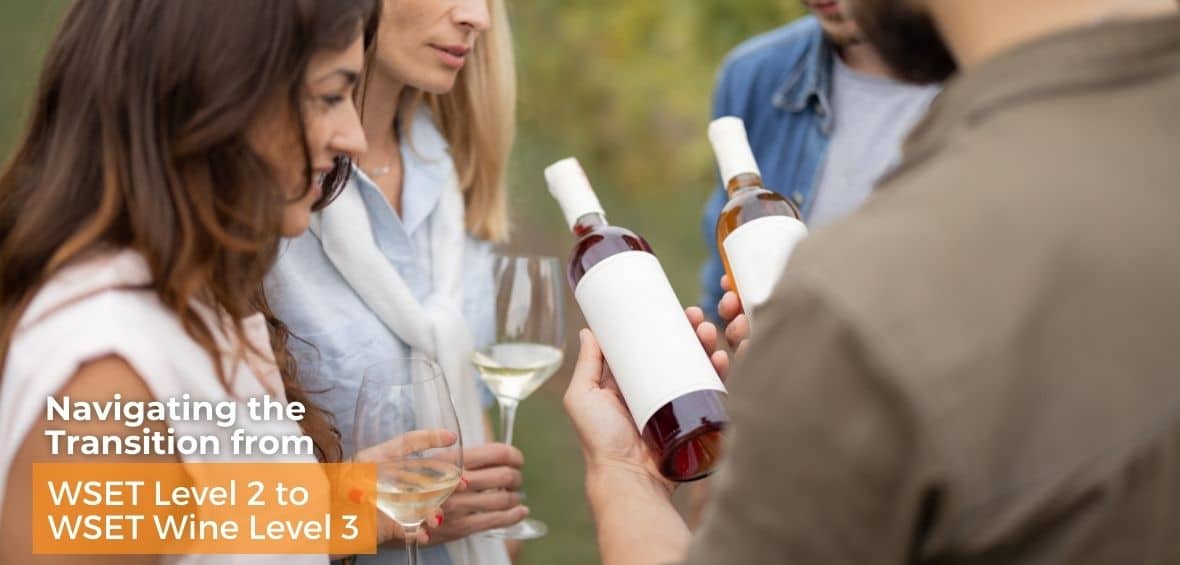5 Ways to Make Sparkling Wine:
A Quick Guide to the 5 Major Production Methods for Sparkling Wine
1 – Traditional Method
- Hand-pick whole clusters (mechanization causes split skins allowing for early oxidation, undesired color extraction)
- Gentle pressing (ie. Many Champagne houses have presses right in the vineyard)
- 1st fermentation to create still, dry base wine (around 10-11% alcohol)
- Blending (varietal base wines, vineyard sites, reserve wines, etc)
- Liqueur de tirage (yeast, nutrients, clarifying agent, sugar)
- 2nd fermentation in bottle (alcohol increases by 1.2-1.3%) Note: the bottle where second fermentation occurs is the same bottle that the customer purchases.
- Yeast autolysis (contact with dead yeast cells creates additional flavors, richer texture)
- Riddling (process of slowly turning and tilting bottles downward in a series of moves so yeast sediment glides to neck of bottle where it can be frozen and expelled)
- Disgorgement (term for the removal of the frozen yeast cap)
- Liqueur d’expedition (topping up with wine and any desired sugar level – called dosage – for the final style)
- Bottle aging (some regions have minimum aging requirements)
TIPS
Liqueur de Tirage and Liqueur d’expedition: How to remember which comes first? Create your own moniker or use this one: ‘Fred’s tirade leads to a quick expedition from the room.”
Wines made in the Traditional Method:
- Champagne (France)
- Crémant (France: Alsace, Bordeaux, Bourgogne, Die, Jura, Limoux, Loire, Savoie)
- CAVA (Spain)
- Cap Classique (South Africa)
- Franciacorta DOCG (Lombardy/Italy)
- Alta Langa DOCG (Piemonte/Italy)
- Oltrepò Pavese Metodo Classico (Lombardy/Italy)
- Trento DOC (Trentino/Italy)
- New World regions such as Napa Valley, CA and Willamette Valley, OR
2 – Transfer Method
- Often hand-picking of grape clusters
- Gentle Pressing
- 1st fermentation to create still, dry base wine (around 10-11% alcohol)
- Blending (varietal base wines, vineyard sites, reserve wines, etc)
- Liqueur de tirage (yeast, nutrients, clarifying agent, sugar)
- 2nd fermentation in bottle (alcohol increases by 1.2-1.3%)
- Yeast autolysis (contact with dead yeast cells creates additional flavors, richer texture)
- Wine emptied into tanks
- Filtering to remove dead yeast sediment
- Liqueur d’expedition (topping up with wine and any desired sugar level – called dosage- for the final style)
- Re-bottled in a new bottle
- Bottle aging
- Many from Australia, New Zealand
3 – Tank/Charmat Method
- 1st fermentation in stainless steel tanks to create base wine
- 2nd fermentation in sealed tanks (dry base wine is placed in tank together with sugar, yeast nutrients, and a clarifying agent)
- Wine is filtered
- Wine is bottled under pressure
TIPS
Stylistic difference to Traditional and Transfer Method Wines: This method is generally not used for wines where the complexity of yeast autolysis is desired in the final wines. It is used instead for a fresh, fruity style of sparkling wine, and especially with grape varieties which do not benefit from the flavors of yeast autolysis.
- Prosecco DOC (Veneto/Italy)
- Conegliano Valdobbiadene Prosecco DOCG* (Veneto/Italy) *although some producers use the metodo classico method
- Asolo Prosecco DOCG (Veneto/Italy)
- Deutscher Sekt* (Germany) *although some Deutscher Sekt producers use the Traditional Method
4 – Asti Method
- Must is chilled so it does not start fermenting, and is stored until needed. (It is fermented to order to create a fresh, new batch.)
- When needed, must is warmed and fermentation (the one and only fermentation with this method) starts. Initially, CO2 is allowed to escape. Partway through, the tank is sealed to retain CO2.
- Fermentation is stopped early (by chilling the wine) at 7-7.5% abv, so the wine is left sweet (with unfermented sugar) and a minimum of 4 atmospheres of pressure.
- Wine is filtered and bottled
TIPS
Asti versus Moscato d’Asti: Fermentation is stopped sooner for Moscato d’Asti so the wine is sweeter and has less atmospheric pressure (less fizz). Legally, the wines can not have above 2.5 atmospheric pressure. With its low pressure, a standard cork can be used on a Moscato d’Asti bottle.
- Asti DOCG (Piemonte/Italy)
- Moscato d’Asti (Piemonte/Italy)
5 – Carbonation Method
- CO2 is injected into a wine and then the wine is bottled under pressure
- Done throughout the world for inexpensive sparklers
Learn more than the the 5 Ways to Make Sparkling Wine
Learn about the Comité Champagne, the official certification body for the Champagne Specialist Certification from Napa Valley Wine Academy. Click Here

Catherine earned her WSET Diploma in 2010. She sits on the Napa Valley Vintners and St Helena Star Tasting Panel and is a wine columnist for the Napa Valley Register and the St Helena Star. Catherine has taught individual wine classes at Napa Valley College, JV Wine & Spirits, and with Napa Valley Wine Academy. She currently handles international wine accounts for Balzac Communications & Marketing where she promotes regions such as Navarra, Rueda, Collio, Franciacorta and Chianti Classico.














